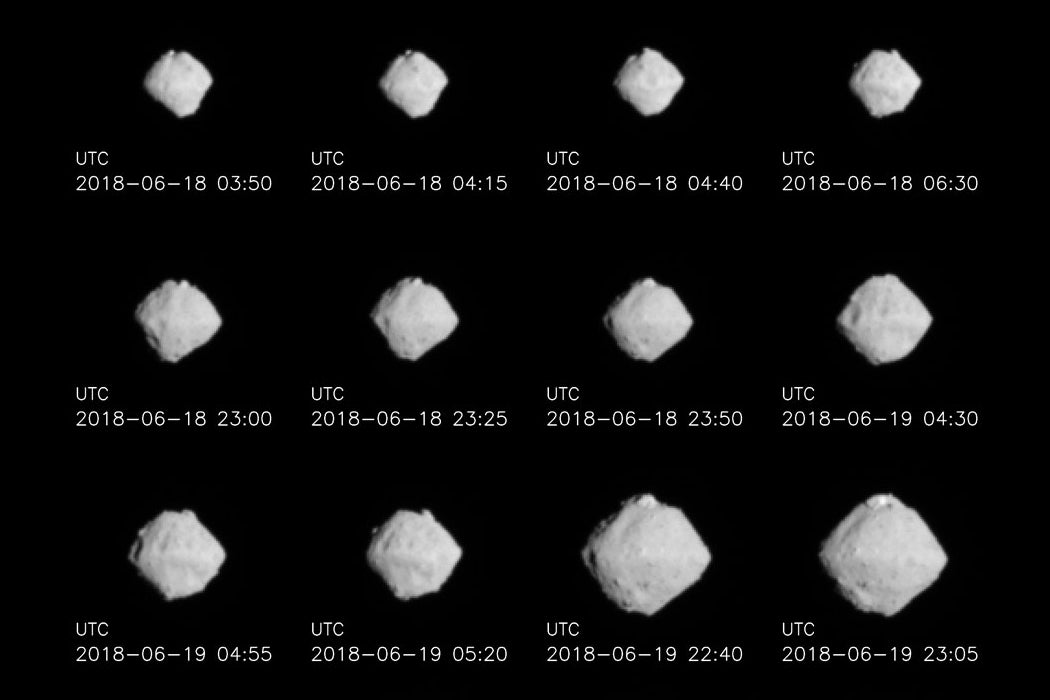Ever wondered what it looks like on an asteroid? Thanks to an international effort led by Japan’s space agency, two small hopping rovers and a lander successfully landed on Asteroid Ryugu in late September. The rovers’ photos reveal a pebbly, rocky surface, and if all goes well the lander will obtain samples from beneath the asteroid’s surface. It’s an incredible achievement. What can we learn from it?
An asteroid mission has been in the works for a very long time. Physicists Hannes Alfvén and Gustaf Arrhenius wrote about their desire for such a mission in 1970. The seventies, following the successful moon landing, was an optimistic period for space exploration— the pair envisioned an asteroid mission in their new future, followed by a Mars mission sometime after 1980. (In that they were technically correct.) They viewed an asteroid mission as fairly easy, since thanks to such a small body’s low gravity it would be easier to take off after landing. As the Rosetta comet landing revealed when the lander bounced into the shadow of a cliff and lost power, landing on such a low gravity object is not so easy.
Asteroids represent an opportunity to examine an earlier phase of the solar system’s formation. An examination of asteroid composition, especially the parts below the surface that are not exposed to the rigors of space, can provide information about the asteroid’s origin. Since some asteroids are leftovers from the solar system’s formation, the composition can reveal what existing body the asteroid is associated with. Its structure can offer clues as to the temperature and pressure when the asteroid formed, as well as the speed with which it came together (or fell apart). Taken together, all this information can help piece together the infant and toddler years of the solar system.
Alfven and Arrhenius got their wish when the Hayabusa spacecraft, launched by the Japanese Aerospace Exploration Agency in 2005, briefly touched down on asteroid Itokawa, stirred up and collected some tiny grain- sized samples, and returned to Earth in 2010. Itokawa is a crumbly, low energy asteroid colorfully called a “rubble pile.” The measurements taken by the probe suggested that Itokawa was formed after the breakup of an earlier asteroid.
Get Our Newsletter
The current mission to Ryugu is the follow-up to that 2005 mission. Mascot lander and the hopping rovers were launched from spacecraft Hyabusa 2. Further analysis will be needed to interpret all the data coming back from the rovers. But since Ryugu is an extremely old asteroid, this mission may shed light on an even earlier period of the solar system’s first beginning.







